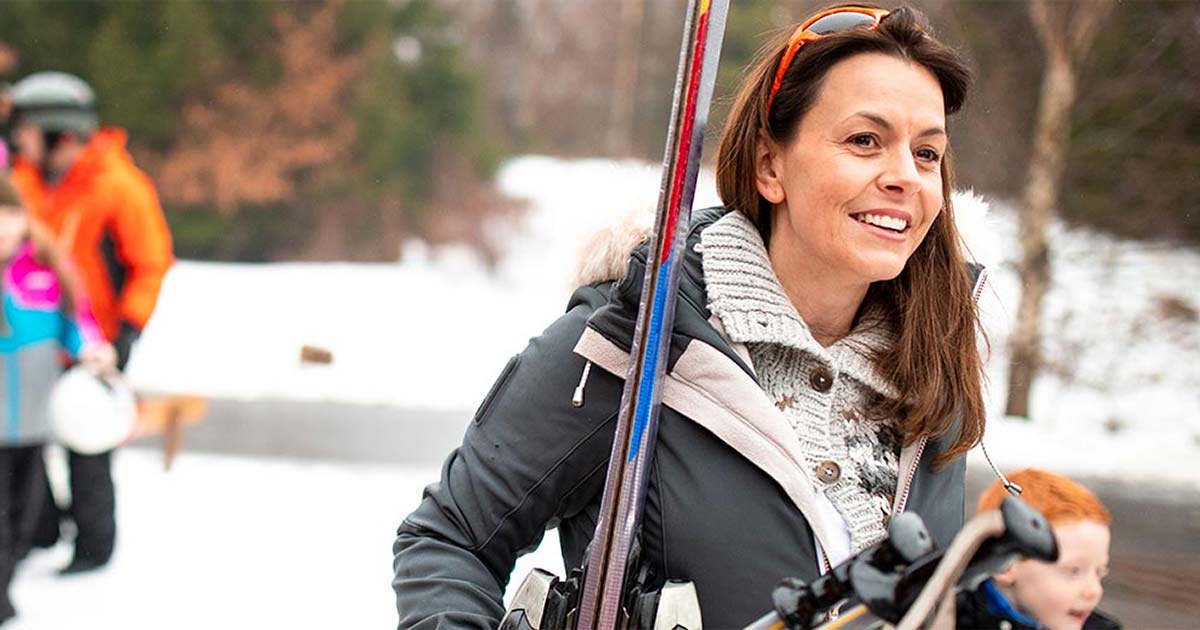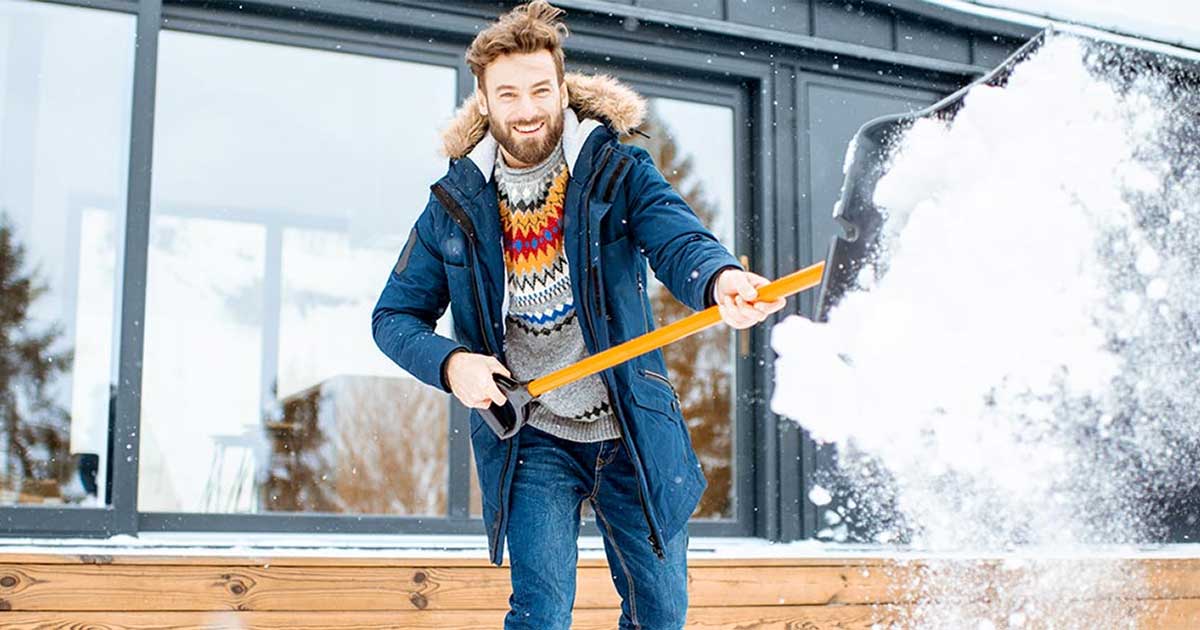How to Prepare for Injury-Free Skiing
Advice to improve your movement, fitness, and overall health from the world's #1 in orthopedics.
If you're a skier, odds are at some point, you've taken a mighty spill. It's tough to avoid, even if you're an expert. "Skiing is a thrilling experience, but there are some risks," says Yukiko Matsuzaki, PT, DPT, OCS, SCS, a clinical specialist in orthopedic and sports physical therapy in Pediatric Rehabilitation at HSS. "Not every injury can be prevented."

However, many injuries are related to factors that are within your control, like your physical conditioning or decisions you make on the slopes. Preparation is incredibly important, particularly if you haven't been very active recently. So before you set foot on the mountain, try these tips to prepare your body for an injury-free trip.
Up Your Strength Game
"Skiing requires a lot of endurance and strength," says Matsuzaki. It's important to begin working on it four to six weeks before your trip—not the week before.
To enhance your endurance, cardiovascular fitness is key. Any type of cardio will do: biking, running, rowing, swimming. Stair climbing can be helpful because it recruits many of the muscles used in skiing, and also provides a tough aerobic workout. "Try to start at 10 to 15 minutes at a moderate pace, then gradually increase to 30 minutes, then 45," says Matsuzaki. "Once you've reached that point, try increasing the intensity."
For strength training, focus on the muscles that stabilize the knees: your quadriceps (front thigh muscle), hamstrings (back thigh muscle) and glutes (butt). The hip abductors, along the sides of your hips, and your core are also crucial.
"The best exercises that I recommend for skiers are things like squats, monster walks, single-leg squats, lunges, planks and side planks," says Matsuzaki. "You can use weights or bands to add resistance." She recommends one to three sets of eight to 12 repetitions, two to three times per week. "If you don't have time to do all of it at the same time, you can always break it up into a few exercises one day and others the next."
If you've had any injuries, especially ones from skiing, it's time to bust out your PT exercises. "Squats, clamshells, bridges, hip activation exercises—do them for a few weeks before you ski again," she adds. These are helpful even if you're injury free.
Perfect Your Balance
"Balance exercises are particularly important in skiing because you're on a slippery surface," says Matsuzaki. It's a matter of being able to adjust to quick movements or absorb uneven impact while keeping yourself upright.
To practice, start by standing on one leg on a flat surface. Keep your eyes open at first. Once you've mastered that, you can make it more difficult by closing your eyes or standing on an uneven surface, like a mat or a cushion. (Just be sure you're ready before you progress.)
Check Your Gear
If you can't remember the last time your gear was checked to be sure it fits you properly, it's time. You should get your gear checked once a year, says Matsuzaki. "You don't want your bindings too tight or too loose, either of which can cause injury." If your gear doesn't fit you anymore, replace it.
A very important side note: Wear a helmet, every time you ski, even if you're experienced. "It can really save your life," she adds.
Stretch, Stretch and Stretch Some More
Many injuries common in skiing, like torn ligaments and fractures, can happen because your body cannot get into certain positions, or you're not flexible enough to move in a certain way.
Before you begin your day, start by doing dynamic stretches like arm swings, trunk rotations, forward and side lunges, leg swings and small jumps in place.
Right before you put on your ski boots, warm up your whole body with jumping jacks, running in place or fast walking. "Just enough to get your heart rate up," says Matsuzaki.
You also want to start with a few slow, easy runs—especially if you haven't been skiing in a few years. "A lot of people are inclined to start with the harder slopes so they don't waste their time," she adds. "But they can act as part of your warm-up."
Stretching at the end of your day is a good idea to loosen the muscles and joints, and to reduce soreness for the next day. "Stretching the large muscle groups—quads, hamstrings, calves, hip flexors and glutes—is so much better than doing nothing," she says. "You'll want to do static stretching, which means you hold the stretch for 30 seconds. Do this two to three times each. If you have a foam roller, put it in your bag or throw it in your car. It will help save you from so much soreness later on."
Refresh Your Skills
If you haven't skied in a while, take a lesson. That goes for kids and beginner skiers too. It's an investment, but "it can help you learn the rules—not just of skiing, but also of the slopes and what the different signs mean and who has the right of way," says Matsuzaki. "These are all injury prevention strategies."
Learning to fall properly is also helpful in avoiding injury in all parts of the body, not just in the knees and legs. "Shoulder injuries are pretty common because in order to break a fall, most people will reach out and fall on an outstretched hand," she says. "A lesson can help you learn to avoid that."
Stay Within Your Limits
Skiing takes up quite a bit of calories and energy. Things like fatigue and dehydration increase your chances of getting hurt. "A lot of injuries happen toward the end of the day, in that very last run that you want to squeeze in," says Matsuzaki. "It's important to use your best judgment. If you feel tired or thirsty, take a break, or stop." That also goes for tackling runs above your current ability level because friends are on them, or because you used to be able to do them with ease.
The most important advice? Be safe, be smart and have fun.
Published 12/18/2020





